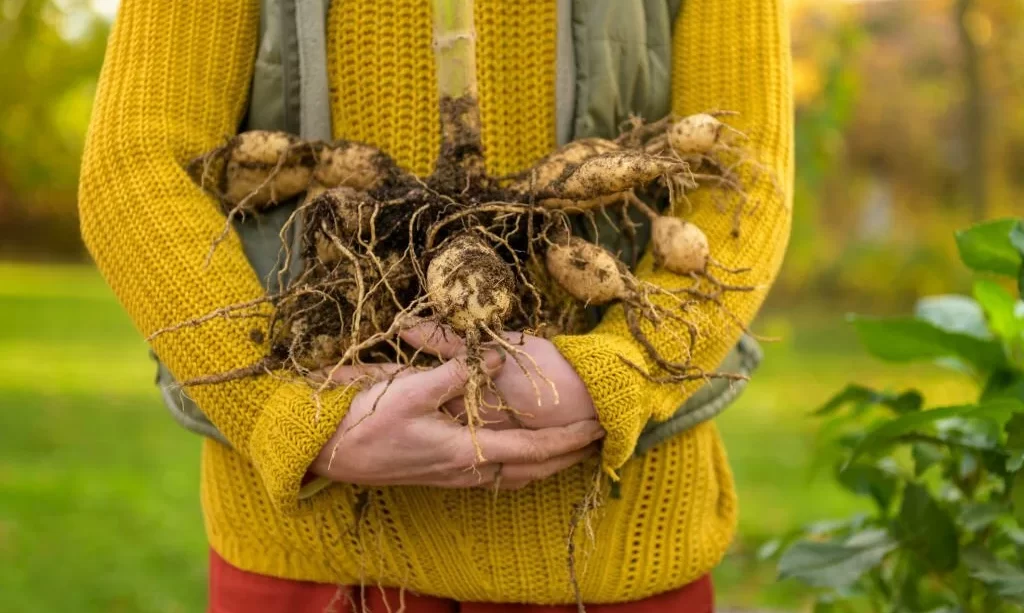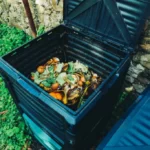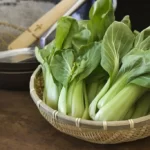Dahlias, with their captivating and vibrant blooms, are beloved additions to many gardens. Ensuring the success of your dahlia garden begins with the tubers you plant. Healthy and viable tubers are the foundation for robust, beautiful dahlia plants. In this comprehensive guide, we will explore the essential steps to determine the viability of dahlia tubers. By carefully inspecting their exterior and conducting the squeeze test, you can make informed decisions about which tubers to plant. This knowledge will set you on the path to a thriving dahlia garden that bursts with color and vitality.
Inspecting the Exterior
The first step in assessing the viability of dahlia tubers is a thorough inspection of their exterior. Healthy tubers exhibit specific physical characteristics that indicate their viability. Look for tubers that are firm to the touch, showing no signs of rot, mold, or damage. A viable tuber will have intact skin and an overall healthy appearance. On the other hand, signs of damage, such as soft spots, blemishes, or discoloration, may indicate an unhealthy tuber. By carefully examining the exterior, you can already glean valuable insights into the condition of the tuber.
Performing the Squeeze Test
The squeeze test is a simple yet effective method for gauging the viability of dahlia tubers. To perform this test, gently but firmly squeeze the tuber with your fingers. Healthy tubers will feel firm and solid to the touch. They should not give in easily to pressure. This firmness is a sign of good hydration and overall health. In contrast, tubers that feel soft, squishy, or yield to pressure may indicate issues like dehydration, rot, or damage. The squeeze test offers a quick and practical way to assess the viability of your dahlia tubers before planting, setting the stage for a flourishing dahlia garden.
The Float Test
The float test is a valuable method for evaluating the density and hydration of dahlia tubers. To perform this test, fill a container with water and gently place the tubers in it. Healthy tubers are generally denser due to their moisture content and will sink in the water. Buoyant tubers, on the other hand, may indicate dehydration or other issues, making them less viable for planting. While the float test is not foolproof, as certain dahlia varieties may naturally float, it provides a useful indicator of a tuber’s overall health. By observing whether your tubers float or sink, you can make more informed decisions about which ones to plant and which ones may need special attention or care.
Cutting and Inspecting the Interior
While the previous methods focus on the exterior and general characteristics of the tuber, there may be situations where a closer inspection of the interior is necessary. If you have concerns about a tuber’s viability, this method is a last resort to determine its condition. To perform this, carefully cut the tuber open with a clean knife, revealing its core. A healthy dahlia tuber should have a crisp, white core. Any signs of rot, mold, or dark discoloration in the core may indicate issues that could affect the tuber’s viability. While this method should be used sparingly, it provides a definitive assessment of a tuber’s health, helping you make informed decisions about planting.
Stress the importance of taking precautions when cutting dahlia tubers and handling sharp tools to avoid accidents or damage.
Storing and Rejuvenating Unhealthy Tubers
For tubers that are determined to be unhealthy but still viable, it’s crucial to provide them with specialized care to rejuvenate them for future planting. Here’s how to do it:
- Trimming: Begin by carefully trimming away any rot or damaged sections using a clean, sharp knife. Ensure that the tuber’s core is healthy and free from decay.
- Treating: Apply a fungicidal dust or sulfur powder to the cut areas to prevent further infection. This step helps control any lingering issues and promotes healing.
- Drying: Allow the treated tubers to air dry for a few days in a cool, dry place. This drying period helps create a protective barrier and prevents moisture-related problems.
- Storage: Store the tubers in a dry and cool location, ideally in vermiculite, peat moss, or sand. Keep them well-ventilated and protected from extreme temperatures. Check on them periodically to ensure their condition remains stable.
- Replanting: When the time comes for planting, inspect the tubers again to ensure they are ready for the garden. Healthy, rejuvenated tubers can be planted with confidence, knowing you’ve given them the best chance for success.
Conclusion
Assessing the viability of dahlia tubers is a crucial step for anyone looking to create a flourishing dahlia garden. By following the methods outlined in this guide, you can make informed decisions about which tubers to plant and how to care for those that may need special attention. From inspecting the exterior and conducting the squeeze and float tests to the more thorough interior inspection and rejuvenation, these steps are essential for ensuring the health and vitality of your dahlia garden.
Remember that well-maintained and viable tubers are the cornerstone of a bountiful and colorful dahlia display. With this knowledge in hand, you can confidently select the best tubers for planting, setting the stage for a garden that bursts with the vibrant hues and captivating beauty of healthy dahlia blooms.



